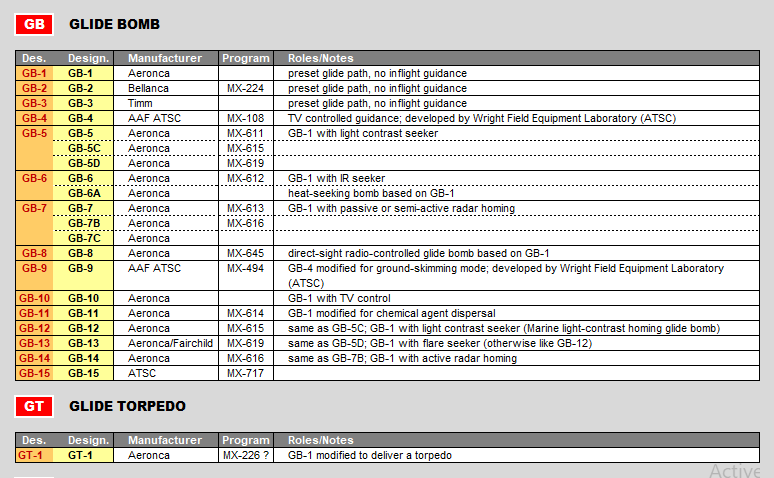Hi everyone,
I just came across this current video on the unguided glide bomb GB-1 experimentally used by the USAAF in WW2:
View: https://www.youtube.com/watch?v=4ij1FjUwi-E
It wasn't very successful, but I think it shows an interesting technical approach to the problem, and the video also makes mention of (possibly only planned, it's narrated from the WW2 or immediate post-war perspective) further developments:
Henning (HoHun)
I just came across this current video on the unguided glide bomb GB-1 experimentally used by the USAAF in WW2:
It wasn't very successful, but I think it shows an interesting technical approach to the problem, and the video also makes mention of (possibly only planned, it's narrated from the WW2 or immediate post-war perspective) further developments:
- GT-1: Unguided gliding torpedo
- GB-4: TV-guided glide bomb
- GB-6A: Heat-seeking bomb
- GB-8: Direct-sight radio-controlled glide bomb
- GB-12: Marine light-contrast homing glide bomb
- GB-13: Flare-seeker (implied: otherwise like the GB-12)
- GB-14: active radar guided bomb ("radar-homing bomb in which both transmitter and receiver are in the missile")
Henning (HoHun)



